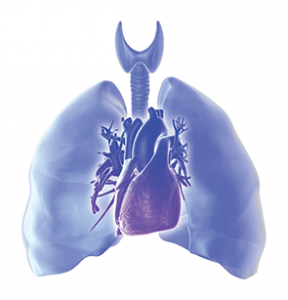
Image Credit: Pasieka/sciencesource.com
Systemic sclerosis (SSc) is an acquired, sporadic, autoimmune, connective tissue disease with two subsets: limited cutaneous scleroderma (lcSSc) and diffuse cutaneous scleroderma (dcSSc). In the U.S., the annual incidence is about 20 cases per 1 million adults, with a prevalence of about 240 cases per 1 million adults.1 As with other connective tissue disorders, SSc occurs predominantly in women, with onset most pronounced in childbearing years and declining after menopause. Although it can present at any age, the most common age of onset is 30–50 years.
Case
A 94-year-old Caucasian woman with hypertension and hyperlipidemia was hospitalized for exertional dyspnea, and chest computed tomography revealed a large left pleural effusion requiring thoracentesis. Transthoracic echocardiogram demonstrated an estimated right ventricular systolic pressure of at least 73 mmHg, consistent with severe pulmonary artery hypertension (PAH). These abnormalities were new compared with a previous echocardiogram, which had been conducted seven years earlier.
After hospital discharge, the patient presented to an outpatient rheumatologist. The examination revealed lung crepitations, mild leg edema, Raynaud’s phenomenon, sclerodactyly and deformities of several distal interphalangeal joints without active synovitis. The workup revealed an elevated anti-centromere B antibody >8.0 U/mL, suggesting a diagnosis of lcSSc. Rheumatoid factor and ANA were also elevated, at 15.10 IU/mL and 12 IU/mL, respectively, but cyclic citrulline peptide IgG and Sm (Smith) IgG were negative, at 1.0 U/mL and 0.2 U/mL, respectively. Other negative results included Scl-70 <0.4 U/mL, ds-DNA 2.0 IU/mL and RNP <1.
Discussion
In our search, we found no records of patients presenting de novo at age 94 with lcSSc—an age markedly above the usual range for any autoimmune disease. PAH is more common in limited than diffuse SSc, with prevalence reports of up to 35%.2 Congestive heart failure, mainly left heart failure, leading to pulmonary venous hypertension is the major cause of pulmonary edema seen in the elderly. Pulmonary edema due to severe PAH appears to be rare, with reports of pleural effusions occurring in only about 7% of SSc patients.3 There are also reports of lung involvement in SSc correlating with older age.
Eunjung Liliana Kim, MD, is a 4th-year post-graduate infectious disease fellow at Rutgers, New Jersey Medical School, The State University of New Jersey, Newark, N.J. Hyun Bae, MD, is a 3rd-year post graduate in internal medicine, and Ritu Kathuria, MD, is a 2nd-year post graduate in internal medicine, both at Icahn School of Medicine at Mount Sinai, in affiliation with Englewood Hospital and Medical Center, Englewood, N.J.
Alexandra H. Gottdiener, MD, has been chief of medicine at Englewood Hospital and Medical Center since 2009 and residency faculty since 2001. She is a fellow in the American College of Physicians, and a member of the Society of Hospital Medicine and the American Association for Physician Leadership. And Girish M. Sonpal, MD, FACR, is an associate faculty member of the rheumatology department at Englewood Hospital and Medical Center, Englewood, N.J.
References
- Mayes MD, Lacey JV Jr, Beebe-Dimmer J, et al. Prevalence, incidence, survival, and disease characteristics of systemic sclerosis in a large US population.. Arthritis Rheum. 2003 Aug;48(8):2246–2255.
- Battle RW, Davitt MA, Cooper SM, et al. Prevalence of pulmonary hypertension in limited and diffuse scleroderma. Chest. 1996 Dec;110(6):1515–1519.
- Thompson AE, JE Pope. A study of the frequency of pericardial and pleural effusions in scleroderma. Br J Rheumatol. 1998 Dec;37(12):1320–1323.
